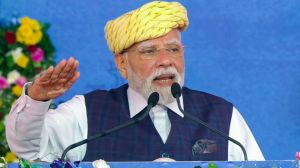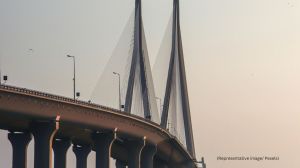The Insider’s Guide to Fantasy
Any attempt to draw a map of something as popular, diverse and indefinable as fantasy literature is bound to be messy and mind-numbing, leav...

Any attempt to draw a map of something as popular, diverse and indefinable as fantasy literature is bound to be messy and mind-numbing, leave everyone unsatisfied, and cause both profound self-doubt and premature hair loss. Nevertheless, from a hero determined to save the day despite overwhelming odds and strange costumes, here is a brief insider’s guide to fantasy literature.
What is fantasy literature? Fantastic fiction, or speculative fiction as it is now called, is that which demands imagination in its readers as well as its writers. The single defining characteristic of fantasy is the existence of an otherworld — a world that is either our world with a few drastic differences, or a world completely different from ours, but remarkably similar in social structure/value systems at some point in our history. Exploring the themes which concern us in an otherworld, or the effects of changing the rules in our world, is what fantasy literature is all about. This makes the definition of fantasy very wide, covering everything from magic realism to superhero comics, Beowulf to Buffy, not to mention most of recent popular children’s writing.
But what we commonly describe as fantasy literature is what publishers call genre fantasy — an incredibly popular genre worldwide, that took off as a publishing phenomenon with Tolkien’s The Lord of the Rings, and today, married to children’s writing, gives the world its greatest publishing phenomenon since the Gutenberg Bible, the Harry Potter series. Interested in knowing more about fantasy? This is where the road branches.
• High/epic fantasy drives the genre worldwide, though four-fifths of these series are footnotes to Tolkien and offer very little in terms of breakthrough plots. The stories are in the same vein as medieval ballads or sagas, set in sprawling pre-industrial words full of heroes, magic and monsters. Try Robert Jordan, or Terry Brooks. Popular subsets of epic fantasy are sword-and-sorcery series like the computer-game inspired Dragonlance, and action fantasy, fast-paced thrillers by writers like David Gemmell starring heroes dying to be played by Vin Diesel.
• Urban/Contemporary fantasy usually receives more mainstream critical acclaim. This is where fantasy literature is headed — dark post-industrial tales, often in urban settings in this world and others, starring multidimensional characters dealing with real, complex issues, and an innovative creature-list free of elves, dwarves and orcs. China Mieville and Neil Gaiman are personal favourites, and part of a movement called the New Weird, which draws heavily from original myths and cult writings in early pulp magazines. Susannah Clarke’s Jonathan Strange and Mr. Norrell would fit in here as well. A conscious effort to avoid genre stereotypes makes these books completely absorbing, if slightly heavy reading.
• Humourous Fantasy novels are rare, and often not particularly funny. But Terry Pratchett, Tom Holt and Robert Asprin are well worth reading. Terry Pratchett’s fabulous Discworld series, now thirty-odd hilarious books long, is Britain’s best-selling series for adults.
• Animal Fantasy novels are the easiest to define — anything with talking animals. Richard Adam’s Watership Down is a good example, and Animal Farm could have been marketed in this category! But then, nearly all of Rushdie’s works could have been sold as fantasy as well.
• Dark/Horror Fantasy is often sold separately, as Horror. Stephen King, an industry unto himself, and Anne Rice are the two best-known names in this field.
• Graphic novels are the fastest growing phenomenon in world literature, and often feature brilliant fantasy-driven work. Alan Moore’s superhero novels and Gaiman’s Sandman series are not to be missed.
• Children’s Fantasy is where the real action is in world publishing today. A blend of all the aforementioned types of fantasy, written with younger audiences in mind (though these books truly appeal to readers of all ages) children’s fantasy has captured the imagination of the young worldwide and made sure, thankfully, that books will survive for a few more centuries. Harry Potter needs no introduction, and Philip Pullman’s His Dark Materials trilogy is an all-time classic. Jonathan Stroud, Christopher Paolini and Eoin Colfer are currently the other big names in this field.
Samit Basu is author of ‘The Simoqin Prophecies’
Photos



- 013 hours ago
- 0212 hours ago
- 034 hours ago
- 0410 hours ago
- 0513 hours ago




























